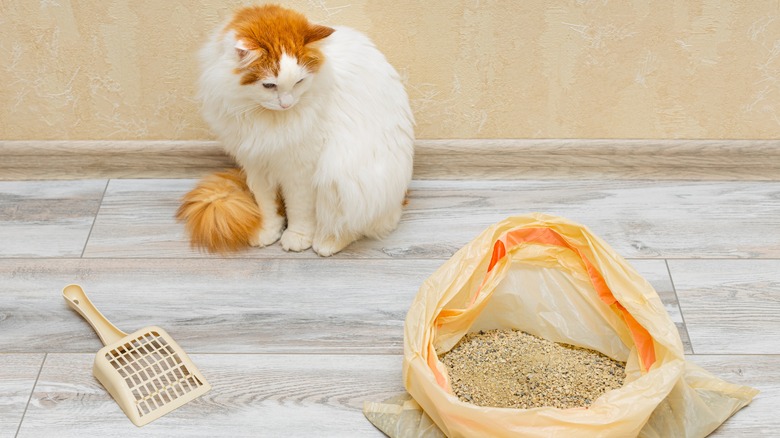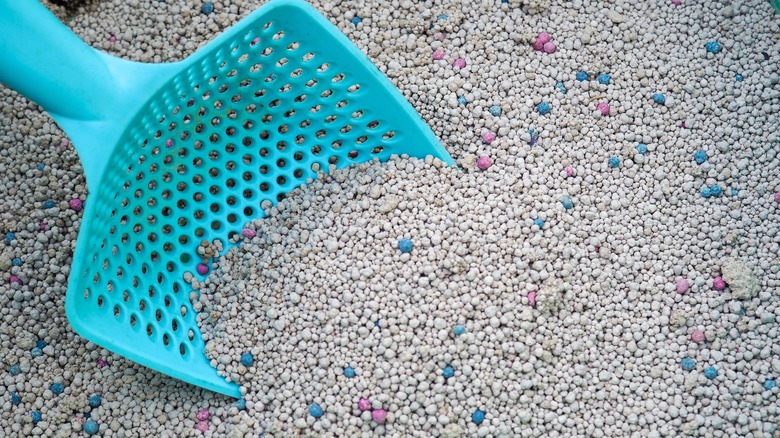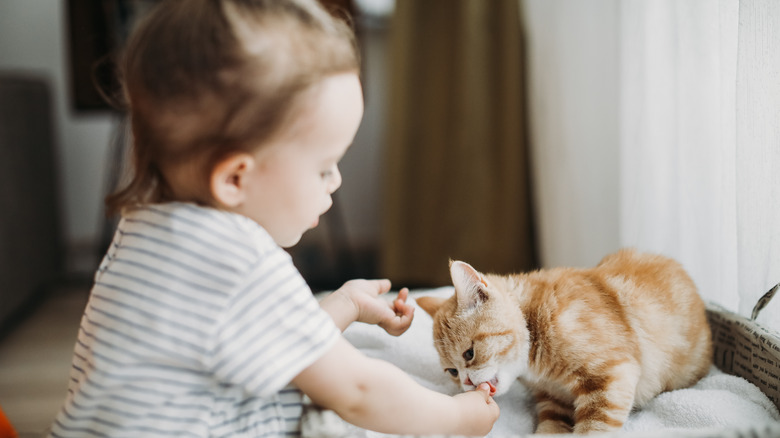What Happens If You Accidentally Ingest Cat Litter?
If you're a cat lover, you're in good company. More than 46 million U.S. households are home to a feline friend, according to 2023 data reported by Forbes Advisor. With their warm snuggles and quirky personalities, cats can bring endless joy to our lives. Perhaps one of the least joyful parts of cat ownership, however, is the regular changing of the litter box.
Cats may pride themselves on cleanliness, but handling their litter box can be a messy business. It's not unusual to find a sprinkling of litter that made its way outside of the box and onto the floor. For inquisitive young children, a handful of litter from an open litter box or tiny pieces scattered across the ground can easily end up in a child's mouth. Printed on the packaging of many cat litter products, you'll see, "Seek medical help in case of accidental ingestion" (via Chewy). For concerned parents, this warning label can seem alarming. Yet poison control experts emphasize that most symptoms experienced by children who have ingested cat litter are mild.
Consumption of cat litter is considered minimally toxic
Experts at the Missouri Poison Center explain that a child consuming a mouthful or less of fresh cat litter is considered minimally toxic and low-risk. In many cases, a child may experience no side effects whatsoever, while others may experience mild digestive discomfort, constipation, eye irritation, or vomiting. If significantly more than a mouthful was swallowed, however, it could put a child at risk for choking or an intestinal blockage, per the Maryland Poison Center. Even if they were to eat a small amount of contaminated litter, doing so is not considered harmful to the child either.
Most concerns around toxicity are in reference to clumping cat litter. Many commercial brands are often made with silica gel, a chemical that gives litter its absorbent quality. According to Scientific American, inhalation of silica dust may potentially cause upper respiratory problems for people and felines alike. Ingestion of another absorbent ingredient in clumping cat litter, sodium bentonite clay, may alternatively pose risks to cats, such as digestive issues or death. To avoid these chemical ingredients, there are many natural cat litter alternatives to choose from.
Follow these steps if your child ingests cat litter
These days, you can find natural cat-litter products made from virtually anything. Scientific American points out that such materials can range from newspaper to sawdust to wood chips. Some brands even incorporate grains and other plant materials, such as maize, whole kernel corn, and more. The perk of using these products is that they are free of clumping chemicals and artificial scents.
Even if your child were to find their way into a litter box filled with brand-name clumping litter, there are easy steps you can take to ensure their health and safety. Experts at the Missouri Poison Center suggest using a damp cloth to thoroughly wipe out their mouth. Don't forget to wipe along the insides of the cheeks and around the gums to dislodge any smaller pieces. Afterwards, have the child drink some water and contact your local poison control for additional guidance or if you have any concerns.



